If you love ramen soup, this recipe for gluten free instant noodle cups will prove that gluten free ramen noodles are quick, easy and delicious!
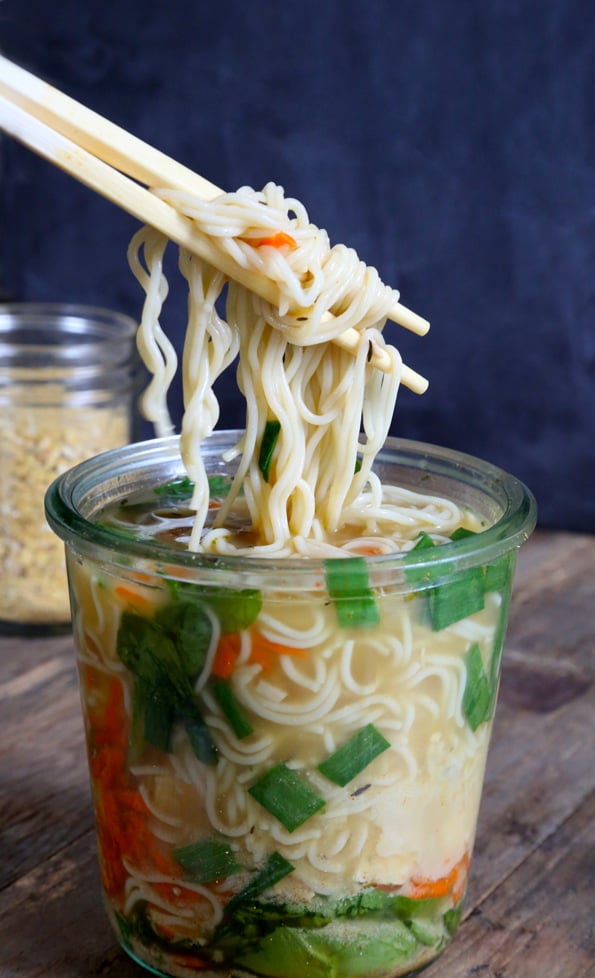
These D.I.Y. gluten free instant noodle cups have been responsible for classing up my husband’s work lunches. His regular office lunch is planned leftovers from the previous night’s dinner.
And he never complains because he is kind, smart, and hungry. But when I have the ingredients on hand, it’s so easy to make him a gluten free ramen noodles cup.
Once you layer in the easy-to-prepare fresh ingredients in these noodle cups, just store them in the refrigerator until you’re ready to serve. They’re perfect for at home or at the office.
At lunchtime, let the cup come to room temperature if you’ve stored it in the refrigerator. Otherwise, the cold ingredients will cool off the hot water too quickly. Fill the cup with hot water, cover and let steep for 2 minutes. Then serve hot. ♨️
The vegetables
These noodle cups have the perfect balance of robust flavors. They’re endlessly customizable, since you can use a variety of raw vegetables, like baby spinach and shredded carrots, and crisp-tender vegetables.
Steeping the vegetables in boiling water in the cups will soften everything a bit. But it’s easy to blanch any vegetables that you’d rather not eat raw.
Simply bring a few quarts of water to a boil. Place the vegetables one at a time in the boiling water for about 30 seconds before draining them and setting them aside.
Green vegetables like sugar snap peas are properly blanched when they’re bright green. Mushrooms should be blanched just until they soften. Each should take about 30 seconds.
The noodles
You can use the same boiling water that you used to soften the nests of gluten free ramen noodles. If you’re preparing the noodles more than a few minutes before you plan to assemble the cups, toss the softened noodles in a tiny bit of olive oil so they don’t stick to one another too much.
Scroll down to the ingredients and substitutions section below for notes on brands of ramen noodles that are gluten free. Many are not, but many more than ever before are safely gluten free so find your favorite brand and stock up!

Homemade vegetable bouillon
The gluten free ramen noodles may look like the star of the noodle cup show, and of course they’re important. But the real innovation of this recipe for gluten free ramen noodles soup is the homemade gluten free vegetable bouillon powder. It turns plain hot water into a satisfying meal.
A blend of soup-friendly spices in just the right balance turns plain hot water into a satisfying meal, cheaply. The base of the bouillon powder, though, is nutritional yeast flakes.
Nutritional yeast is made up of inactive yeast flakes, and it’s something I used to think of as for hard-core vegans alone. But now it’s everywhere, and it’s become an essential part of many savory dinner recipes—like homemade gluten free rice a roni.
Store the vegetable bouillon in a glass container with a tight-fitting lid, and use it to make hot water into vegetable stock when you want a warm cup of something. Add the dry mixture to any savory chicken dish and amp up the flavor in an instant.
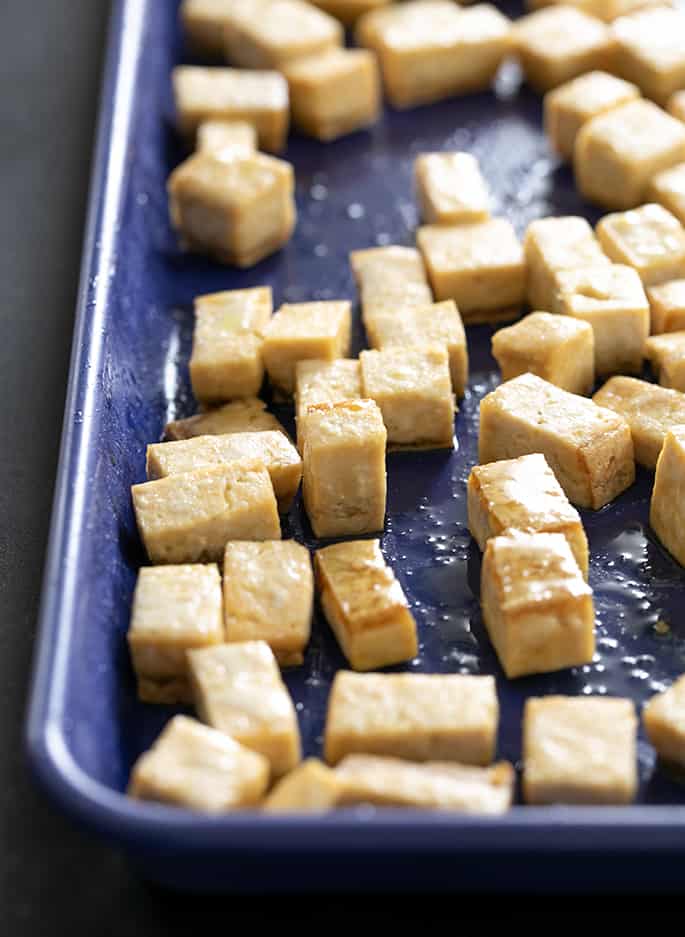
How to make baked tofu
I make baked tofu all the time for dinner, and serve it in all sorts of ways that everyone in my family loves. Of course, you can eat any tofu raw right out of the package, and I love it like that, but I think most people prefer it cooked.
I always begin with extra firm tofu, and my favorite brand is Trader Joe’s. Their extra firm tofu is packed in water, as all tofu is, but it’s super dense so it’s very easy to squeeze most of the water out of it with nothing more than a paper towel.
If your extra firm tofu is more porous, you might want to press out the moisture. You can use either a tofu press or place it in a few layers of towels (paper or cotton tea towels) on a plate and pressed with something heavy like a book or canned goods. Either method is really time-consuming and annoying, but effective.
After removing the moisture, simply slice the tofu into chunks, toss them with a tablespoon or two of extra virgin olive oil, add kosher salt to taste, toss again, and spread into an even layer on a nonstick or lined baking sheet. Bake in a 400°F oven for about 20 minutes.
Be careful not to bake the tofu for so long that it becomes crunchy through to the middle. You only want a crust on the outside of the tofu. If you’re very, very patient, you can flip the pieces of tofu halfway through baking, so it crisps evenly on both sides. I am not very, very patient.
I serve this tofu in these gluten free ramen noodles cups, but also in cauliflower fried rice. I also love to serve tofu in gluten free Chinese food and as a protein addition to green salads.

Ingredients and substitutions
Nutritional Yeast: I typically use Bragg brand “Nutritional Yeast Seasoning,” and I find it online, in my local health food store and in Whole Foods. Bob’s Red Mill also makes a gluten free “Nutritional Food Yeast,” that is just as good.
Nutritional yeast is an inactive form of yeast, and has a mild nutty and cheesy flavor. I’m not planning to sprinkle it on all my food (some love it on popcorn!), but I do love it in this bouillon powder.
Wasabi Powder: I use Eden brand wasabi powder, as it’s reliably gluten free. I find it online and in my local health food store.
Ramen or Rice Noodles: King Soba brand and Lotus Foods brands brown rice ramen are gluten free ramen noodle brands that are sold in nests. I find them in most grocery stores today.
I have also used Happy Pho brand brown rice noodles, also purchased on amazon.com, which also come in separate “nests,” which is perfect for portioning in these instant noodle cups. Annie Chun also makes gluten free Maifun rice noodles.
Miso Paste: Some types of miso paste are made from barley, which is of course off limits on a gluten free diet. Others are made from soybeans. There are a few reliably gluten free brands of miso paste.
I have used both Eden brand gen mai miso (which I really like, but it can be a bit hard to find) and Organicville gluten free miso pastes, which I found at Whole Foods. In the video, you’ll see me using a squeeze package of miso paste made by Smart Miso, which I really like for ease of use.
If you can’t find miso paste, try adding some gluten free fish sauce for the pronounced “umami” flavor that miso delivers so well.
Tamari/soy sauce: I usually use Kikkoman brand gluten free soy sauce or San-J brand Tamari gluten free soy sauce. Bragg brand Liquid Aminos is also a great choice, but lacks some of the depth of flavor of the others.
Scallions: When I buy fresh scallions, I wash and chop them (or cut them into a large dice with kitchen shears), and spread them in a single layer on a lined rimmed baking sheet. Then, I place the baking sheet in the freezer. Once the scallions are frozen, I transfer them to a zip-top bag and store them in the freezer.
Frozen chopped scallions defrost very quickly when removed from the freezer, and I can use as many or as few as I like. And once they’re frozen, they don’t smell at all, so no worries about a smelly freezer.
I also buy freeze-dried scallions that are stored at room temperature, and use them sparingly since they’re expensive.

Gluten Free Ramen Noodles
Ingredients
Bouillon Powder
1/2 cup (40 g) nutritional yeast flakes
2 tablespoons kosher salt
2 tablespoons onion flakes (or 1 tablespoon onion powder)
1 1/2 teaspoons garlic powder
3/4 teaspoon dried thyme
1/2 teaspoon dried sage
1 teaspoon smoked paprika
1/4 teaspoon turmeric
1/4 teaspoon wasabi powder (if you can’t find it, leave it out)
1/8 teaspoon ground ginger
1 tablespoon light brown or coconut palm sugar
Instant Soup
4 “nests” gluten free ramen or rice noodles
Raw shredded carrots
Sugar snap peas, blanched in boiling water for 30 seconds
Sliced button or miniature portobello mushroom, blanched in boiling water for 30 seconds
Fresh baby spinach leaves
1 cup cubed extra-firm tofu (raw or baked, as described above) or cooked and diced chicken breasts
2 tablespoons gluten free miso paste
4 teaspoons gluten free tamari
1/4 cup Bouillon Powder (from above)
1/2 to 3/4 cup chopped fresh or 2 tablespoons freeze-dried scallion greens
Instructions
First, make the bouillon powder. Place all of the bouillon ingredients in a medium-size bowl and mix to combine well. Place in a resealable glass container (a small mason jar works great), and set aside.
Next, cook the noodles one nest at a time according to the package directions or by boiling them in about a quart of water until they separate and begin to soften. Drain in a colander and rinse with cold water to stop the cooking, and set them aside briefly. If you don’t plan to assemble the noodle cups right away, toss the softened noodles in a tiny bit of extra virgin olive oil to prevent clumping.
To assemble the instant soups, set out four heat-safe jars that can accommodate about 20 fluid ounces in volume (I use 19.6-ounce straight-sided Weck jars). In each jar, layer the ingredients in the following order: about 1 cup total vegetables (spinach leaves, carrots, blanched mushrooms, blanched sugar snap peas), 1/2 cup tofu or chicken, 1 1/2 teaspoons miso paste, 1 teaspoon tamari, one nest of softened noodles, 1 tablespoon bouillon powder and, finally, scallion greens to taste. Cover and store in the refrigerator until ready to serve (you can store assembled cups for up to 3 days if your ingredients are fresh).
When ready to serve, if the assembled cup has been refrigerated, allow it come to close to room temperature first. Then, fill each container with boiling water (leaving a small space to permit covering the container) and cover tightly. Allow the container to steep for 2 minutes. Open, stir gently and enjoy.
Adapted from Serious Eats Instant Noodles. Originally published on the blog in 2014. Video, some photos, some text new. Recipe adapted slightly but largely unchanged.





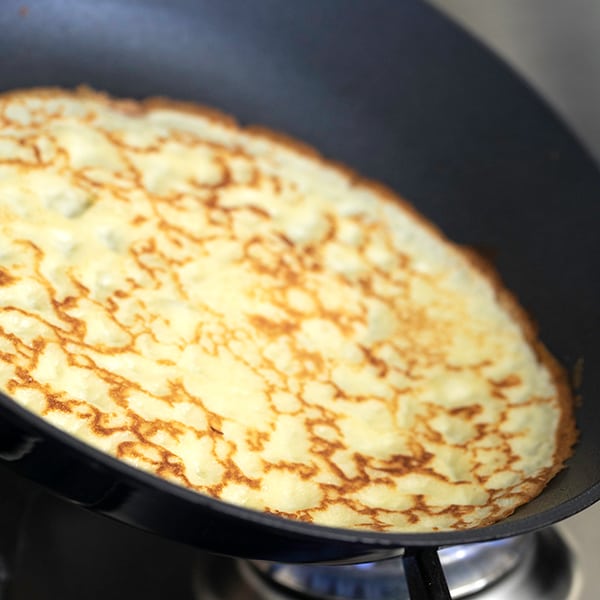


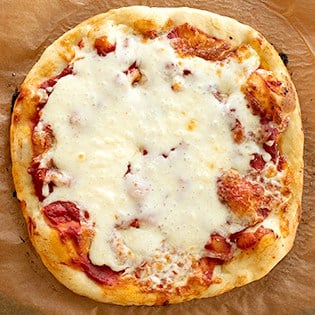
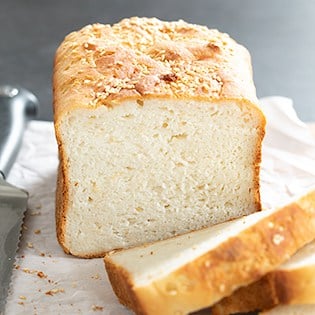

Nicola says
I’m also curious about which brand of noodles is in the picture? I see the suggested brands in the post, but still wonder which this is. I’ve tried the Lotus brand but wasn’t too crazy about it.
Nicole Hunn says
I believe they were the Happy Pho noodles in the photos, Nicola.
Linda Whipple says
Hi, Nicole ??. Just saw this recipe in the email you sent out today. This sounds wonderful! I was thinking you could, also, add small salad shrimps, instead of the chicken or tofu. Actually, leaving out the protein altogether would work, too. ? Something to look forward to.
Nicole Hunn says
Absolutely those variations would be great. Anything goes, Linda!
Jennifer Jones says
Do you have any update on the ramen noodles? My daughter just tnds to not like brown rice noodles. And the ones in your pictures look so white. What did you use in the picture? Can you tell me which brands to look for that come in a nest? Thanks!
Nicole Hunn says
Please see the Ingredients and substitutions section where I explain all the ingredient sourcing information, Jennifer.
Jennifer says
I’ve been craving cup o noodle but was advised not to eat instant noodles anymore because of my stomach issues. Am I glad I found this recipe that incorporates all fresh ingredients. Who knew there were so many spices and seasonings in those cup o noodles?? I didn’t have yeast flakes but I had chicken bullion cubes I used in place of it and I used Asian veggies and fresh noodles from the Asian market for even fresher taste. Hits the spot!! Thank you for sharing this recipe, I no longer have to eat the unhealthy instant noodle anymore!
Jennifer says
I skip the wasabi, but in soup bowl I add a blob of kimchi. Om nom nom :)
Lucy says
Looking good Nicole! Love this DIY :)
Jill Allmandinger Moyer says
Where did you find the soup cups for this recipe?
Susan P says
This looks amazing! I haven’t been able to find a bouillon that doesn’t have MSG which I’m allergic to, any suggestions for a resource? For now, I make my own chicken stock and freeze in ice cube trays. It would be convenient to have the mix all together. Thanks!
Anneke says
A big part of the recipe is the homemade bouillon powder, scroll through the whole post and Nicole tells you exactly how to make it.
Mary Garrard says
I would use pint canning jars for this kind of thing. I can often find them at thrift stores or garage sales for very little, often a quarter per jar. I also use the white plastic lids sold alongside the canning jars in most stores that sell such items. That’s a less expensive alternative to the Weck jars.
gumby says
There are some awesome buckwheat ramen noodles out there (I get mine from the gluten free mall), they would be heavenly in this recipe! Thanks for the idea! :)
MelissaBee says
One more question: how much bouillon does this recipe make? I’d love to make enough to have it on hand for other recipes…
Nicole Hunn says
Hi, Melissa, As written, the bouillon powder recipe makes about 1 cup. You could certainly double it, and keep the bouillon in a sealed container in the pantry or refrigerator. I definitely plan to keep it on hand forevermore!
Shelley says
Yes, I would like to know where to purchase those tall glass cups!
Nicole Hunn says
See below! They’re Weck jars. :)
Michelle says
Serious Eats is where I originally found the recipe, but the noodle soup recipes there are so complicated, I knew Nicole could come up with a simpler version for all of us, and she did. These are completely different from the ones on Serious Eats.
go_nelly says
where’d you get those nice tall glass cups with lids?
Nicole Hunn says
See below! They’re Weck jars. :)
KristiC says
I need a “LOVE” button. J misses Ramen. Woohoo
Jennifer S. says
Yum! I have researched GF ramen noodles in the past without much luck so excited to hunt your favorites down. looks super yummy!
MelissaBee says
How far ahead can you make and store these to use later?
Nicole Hunn says
Please see my answer below, Melissa! :)
DianaDP says
I would love to know where you got those containers!
Nicole Hunn says
Please see my answer below, Diana! They’re Weck Jars. Love ’em.
DianeR says
Sooo….do you think that these can be frozen? Maybe once everything is thawed, the hot water could be added? I realize some of the veggies may get a bit limp but….?
Nicole Hunn says
I keep cooked, cubed chicken in the freezer pretty much all the time, Diane. And the bouillon keeps in the pantry for a long time, plus I keep the scallions in the freezer as I explain in the recipe. From there, the whole thing is assembled in a flash. I think that’s a lot better than assembling ahead of time.
Jennifer says
That is genius! It sounded like so much work, but your tips will help, thanks!
Mare Masterson says
I love you more and more each day!! Michelle, thank you for being responsible for this one!! Hugs and kisses ladies!
By the way, next book is preordered! I cannot wait!
Nicole Hunn says
So glad you’re into this, Mare! Thanks for preordering, too. :)
Michelle says
I was excited that Nicole wanted to tackle these!
Claudia says
I’m so very excited! I love ramen noodles…..and have been (like your husband, eating leftovers as my lunch). Going to prep these this weekend for lunch next week.
Susan says
I’m so making these for my college kiddo! Where did you find the glass jars??
Nicole Hunn says
They’re Weck jars, the 19.6 fluid ounce size. They’re the straight-sided mold jars. You can find them online all over, and in Crate and Barrel (online and in store), Susan.
Susan says
Thank you!
Linda says
Thanks for this – my daughter has also been lamenting her lack of Ramen noodles (although she only ever had them once, pre-diagnosis at a friend’s house – I OD’d on them in college and can’t imagine buying them now!). Quick question – how long will they stay good in the refrigerator?
Mare Masterson says
Linda, real Ramen is awesome! So different than what we get in those packages in the supermarkets.
Nicole Hunn says
I would say they’d be good in the refrigerator for up to 3 days, Linda. But you can have them ready fast if you keep the ingredients on hand, including the bouillon powder, and then just cook the noodles quickly and assemble the cups. I keep cooked, cubed chicken in the freezer pretty much all the time, and then defrost in the refrigerator. That makes very quick work of these!
Michelle says
I can’t wait to make these! Thanks so much!
Nicole Hunn says
You have the best suggestions, Michelle!! *mwah*
Lauren Morra says
Swoon! I thought my ramen days were over. We lived in Japan when I was small and ramen to me is the most comforting soup. Plus I seriously have a thing for nutritional yeast which sounds odd but I love the taste. Thanks Nicole!
Nicole Hunn says
So glad, Laura! If you love nutritional yeast, you’ll be over the moon for the bouillon. :)